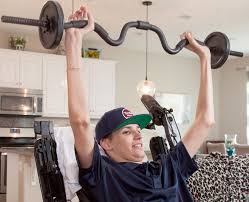
Breaking News
 Mirrored concrete for cheap solar energy
Mirrored concrete for cheap solar energy
 All Government Is Dictatorial Because All Government Is Totalitarian
All Government Is Dictatorial Because All Government Is Totalitarian
 Putin Says He's Ready for Peace
Putin Says He's Ready for Peace
 Medicaid Fraud in Minnesota at least $9 Billion Since 2018
Medicaid Fraud in Minnesota at least $9 Billion Since 2018
Top Tech News
 This tiny dev board is packed with features for ambitious makers
This tiny dev board is packed with features for ambitious makers
 Scientists Discover Gel to Regrow Tooth Enamel
Scientists Discover Gel to Regrow Tooth Enamel
 Vitamin C and Dandelion Root Killing Cancer Cells -- as Former CDC Director Calls for COVID-19...
Vitamin C and Dandelion Root Killing Cancer Cells -- as Former CDC Director Calls for COVID-19...
 Galactic Brain: US firm plans space-based data centers, power grid to challenge China
Galactic Brain: US firm plans space-based data centers, power grid to challenge China
 A microbial cleanup for glyphosate just earned a patent. Here's why that matters
A microbial cleanup for glyphosate just earned a patent. Here's why that matters
 Japan Breaks Internet Speed Record with 5 Million Times Faster Data Transfer
Japan Breaks Internet Speed Record with 5 Million Times Faster Data Transfer
 Advanced Propulsion Resources Part 1 of 2
Advanced Propulsion Resources Part 1 of 2
 PulsarFusion a forward-thinking UK aerospace company, is pushing the boundaries of space travel...
PulsarFusion a forward-thinking UK aerospace company, is pushing the boundaries of space travel...
 Dinky little laser box throws big-screen entertainment from inches away
Dinky little laser box throws big-screen entertainment from inches away
 'World's first' sodium-ion flashlight shines bright even at -40 ºF
'World's first' sodium-ion flashlight shines bright even at -40 ºF
First Paralyzed Human Treated With Stem Cells Regains Upper Body Movement

A former quadriplegic can now hug family and friends, draw and write, and use a motorized wheelchair thanks to an experimental stem cell treatment.

Credit: YouTube
A split-second decision while driving resulted in 21-year-old Kristopher (Kris) Boesen being involved in a car accident. After the vehicle he was driving fishtailed on a wet road, hit a tree, and then slammed into a telephone pole, Boesen lost consciousness.
Though Kris woke up alive in the hospital, he found himself paralyzed. Reportedly, his cervical spine suffered a traumatic injury from the crash. Both he and the car were "broken", and this reality was difficult to comprehend. Doctors told the young man's parents that he would likely be paralyzed from the neck down for life. However, they also informed them that Kris qualified for a clinical study that might help.
Thanks to Charles Liu, director of the USC Neurorestoration Center, and a group of physicians from the Keck Medical Center of USC, Kris has received mobility of his upper body. The group of doctors became the first in California to inject patients involved with the trial with an experimental treatment made from stem cells, and so far, the results – at least concerning Boesen – have been positive.
Liu explained:
"Typically, spinal cord injury patients undergo surgery that stabilizes the spine but generally does very little to restore motor or sensory function. With this study, we are testing a procedure that may improve neurological function, which could mean the difference between being permanently paralyzed and being able to use one's arms and hands. Restoring that level of function could significantly improve the daily lives of patients with severe spinal injuries."



